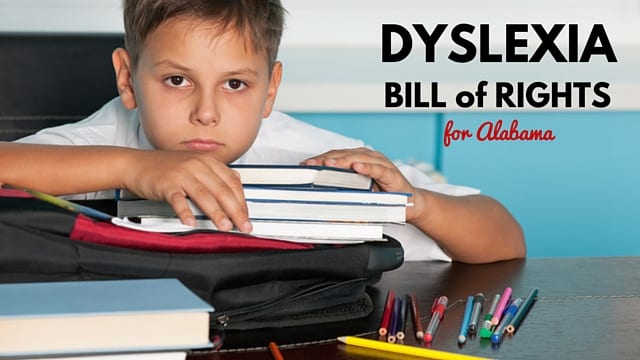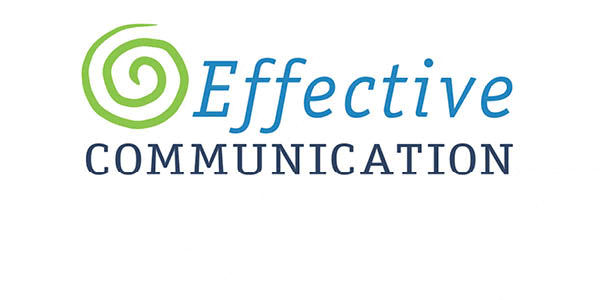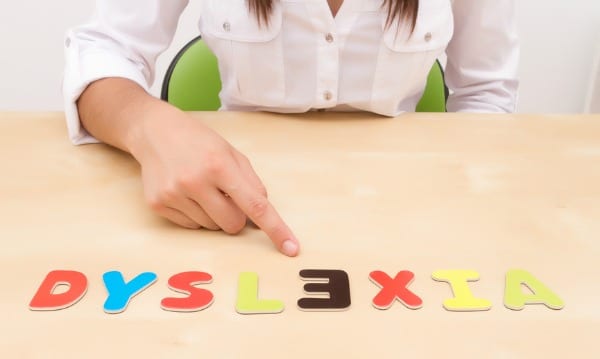Alabama’s New Dyslexia Legislation

The Alabama State Department of Education introduced dyslexia amendments to the Alabama Administrative Code (AAC) in early October 2015. The AAC sets forth rules that govern Alabama’s public schools.
Previously in Alabama, there were no specific requirements for schools to even acknowledge dyslexia, much less screen students and provide dyslexia-specific intervention. Some school administrators even refused to use the word “dyslexia”. There was no early identification, and students with dyslexia were served only when their academic progress fell to the point the school would support them through special education. Even then, many dyslexic students who are bright, and have average to above average intelligence would not qualify for special education services. When you consider that dyslexia affects roughly 20% of the population, or 1 in 5 people, it is clear that too many Alabama school children were not being supported.
The first important piece of this legislation creates a legal definition of dyslexia for the state of Alabama.
According to the Alabama State Department of Education and the Alabama Administrative Code, dyslexia is defined as “a learning challenge that is neurological in origin and characterized by difficulties with accurate and/or fluent word recognition and by poor spelling and decoding abilities. These difficulties typically result from a deficit in the phonological component of language that is often unexpected in relation to other cognitive abilities and the delivery of effective classroom instruction. Secondary consequences may include problems in reading comprehension and reduced reading experience that can impede growth of vocabulary and background knowledge.”

With the passage of this “Dyslexia Bill of Rights”, the State Department of Education will make available dyslexia training, that must be accredited by the International Dyslexia Association, in the multisensory language approach to educators, who will then support other teachers in their schools. A multisensory approach utilizes all the learning pathways: seeing, hearing, feeling, and kinesthetic awareness. Additionally, classroom teachers will be provided on-going professional development using specific research-based strategies proven to be effective for students with dyslexia, to equip them to meet the needs of students with dyslexia in classrooms across the state.

What Dyslexia Legislation Means For You
This bill will require each school district to provide dyslexia screening for any student who scores below the 25th percentile in reading on the universal screening currently being conducted with students in the district, and/or for any student upon teacher or parent/guardian request. Each school’s Problem Solving Team (PST), part of the Response to Intervention (RtI) framework, will determine appropriate dyslexia-specific interventions, monitor student progress, and report that progress to parents. Each school must provide dyslexia-specific intervention through general education classes, and provide access to assistive technology and other needed accommodations. This is a significant change for students with dyslexia, who previously only received support in most Alabama public schools if they were identified for special education, or had a 504 plan.
It should be noted that these screenings do not constitute a diagnosis of dyslexia, but rather an indicator that the student may benefit from dyslexia-specific interventions aimed at remediating reading, writing, and spelling difficulties. If a student does not respond to the dyslexia-specific interventions offered by the school, other educational assessments might be suggested to allow parents the option of referral for special education services in the public school setting. Parents might also consider more frequent, individualized tutoring outside of what the school offers, or a different school setting altogether.

The dyslexia amendments also established the Alabama Dyslexia Advisory Council, which has worked closely with State Department personnel to develop these amendments and provide valuable resources for educators and parents. These resources, as well as a more detailed outline of the plan for Alabama schools can be found in the Dyslexia Resource Guide. Alabama’s new dyslexia legislation is progress for local families affected by this disorder, but we still have more work to do.
You Might Also Like..
Finding Support When You Have a Special Needs Child
Dyslexia Screening at Greengate School
School Spotlight: Huntsville Achievement School
Homeschooling with STEAM
 ABOUT THE AUTHOR: Dr. Debbie Hargett is the Head of Greengate School in Huntsville. She has more than 28 years of experience in K-12 and post-secondary education. She holds a doctorate in Organizational Leadership, certification in Education Administration, and a Master of Arts in Teaching. She retired from Huntsville City Schools in 2012, having held positions as a classrooms teacher, coach, athletic director, assistant principal, principal, and consultant. She most recently served as an adjunct instructor at Faulkner University where she served as a Research Project Manager. [/themify_box]
ABOUT THE AUTHOR: Dr. Debbie Hargett is the Head of Greengate School in Huntsville. She has more than 28 years of experience in K-12 and post-secondary education. She holds a doctorate in Organizational Leadership, certification in Education Administration, and a Master of Arts in Teaching. She retired from Huntsville City Schools in 2012, having held positions as a classrooms teacher, coach, athletic director, assistant principal, principal, and consultant. She most recently served as an adjunct instructor at Faulkner University where she served as a Research Project Manager. [/themify_box]
As a hyper-local website focused on all aspects of parenting in and around Morgan County, and the Tennessee Valley, River City Mom occasionally asks local parents to submit their stories for publication. This is part of our continual effort to represent varied viewpoints and experiences on our site. However, these articles should not be seen as necessarily expressing the views of Rocket City Mom Media Group, LLC.









